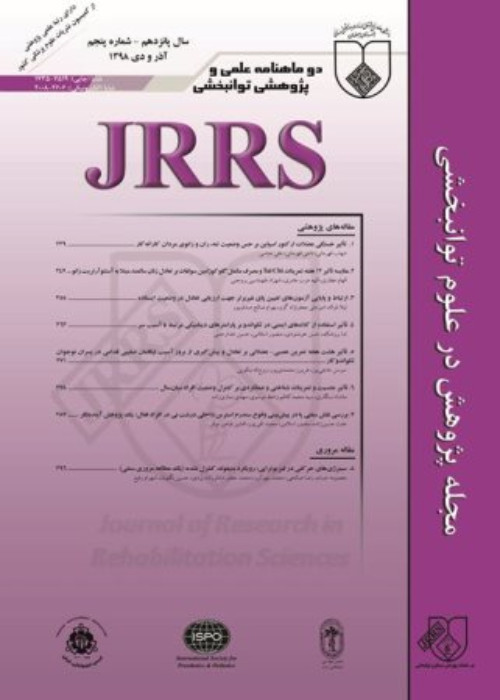Studying the knee joint proprioception in generalized joint hypermobility as compared to healthy subjects
The role of joint hypermobility in musculoskeletal injuries has been emphasized. In recent studies, proprioception defects have been reported in patients with hypermobility syndrome. In contrast to patients with general hypermobility, those with joint hypermobility syndrome have musculoskeletal disorders which may themselves cause proprioception disorders. So, these reports cannot purely confirm the effect of joint hypermobility on proprioception. The objective of this study was to assess the effect of generalized joint hypermobility on knee joint position sense in subjects with generalized joint hypermobility.
In this case-control study, 20 subjects with generalized joint hypermobility who suffered from knee hypermobility in their dominant lower limb and 20 healthy subjects were recruited from available population of male and female college students through a simple convenient sampling. All subjects fell within the age range of 18 to 30 years. The position sense error was measured at three angles of knee extension -15°, -40° and -65° in sitting position via goniometry of digital pictures using Auto-CAD software. These errors were compared between two groups and also between different angles. Kolmogrov-Smirnov test confirmed the normal distribution of variables.
The results of this study showed that the position sense of knee joint in young subjects with generalized joint hypermobility was less accurate than in healthy subjects. Also the results indicated that the knee joint position sense in both groups was more accurate for angles at the end of range of knee extension that for those at inner range.
The results of this study confirmed the existence of knee joint position sense defect in subjects with generalized joint hypermobility who have knee joint hypermobility. It is recommended to evaluate position sense of these joints in such subjects especially when they intend to enter sport activities in which the risk of joint injuries may elevate. Moreover, it is required to design training protocols for improving joint position sense in such cases.


